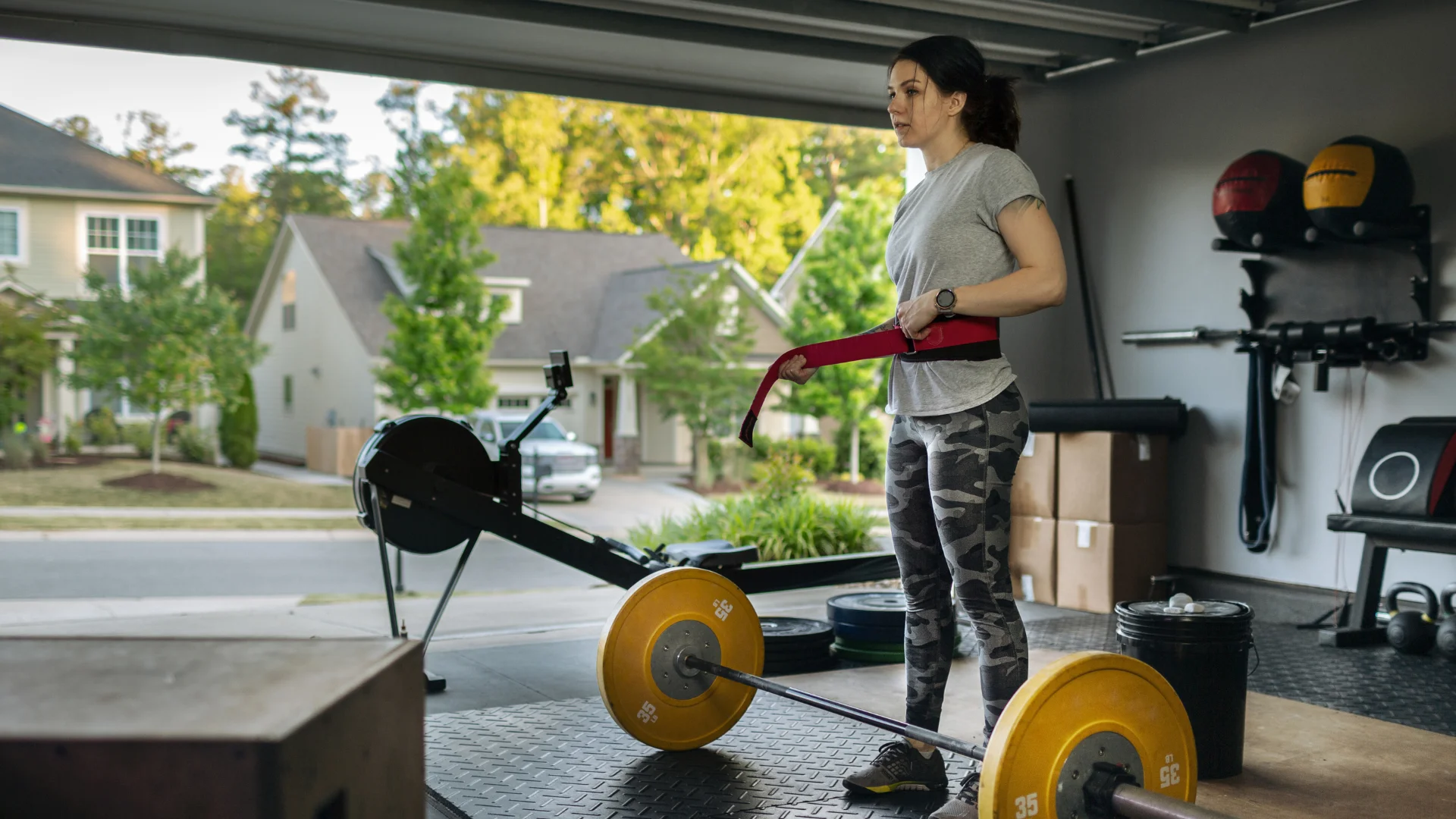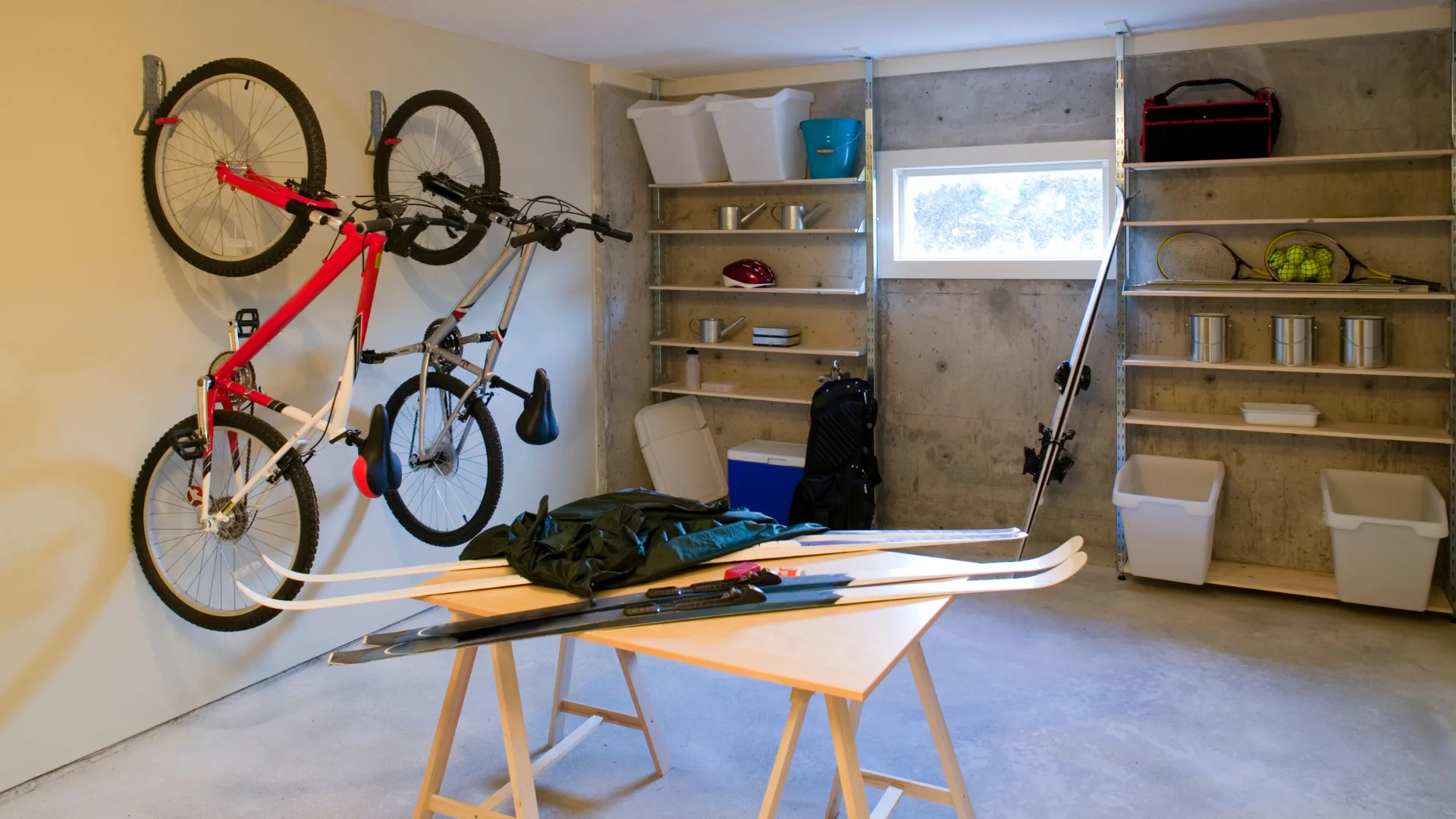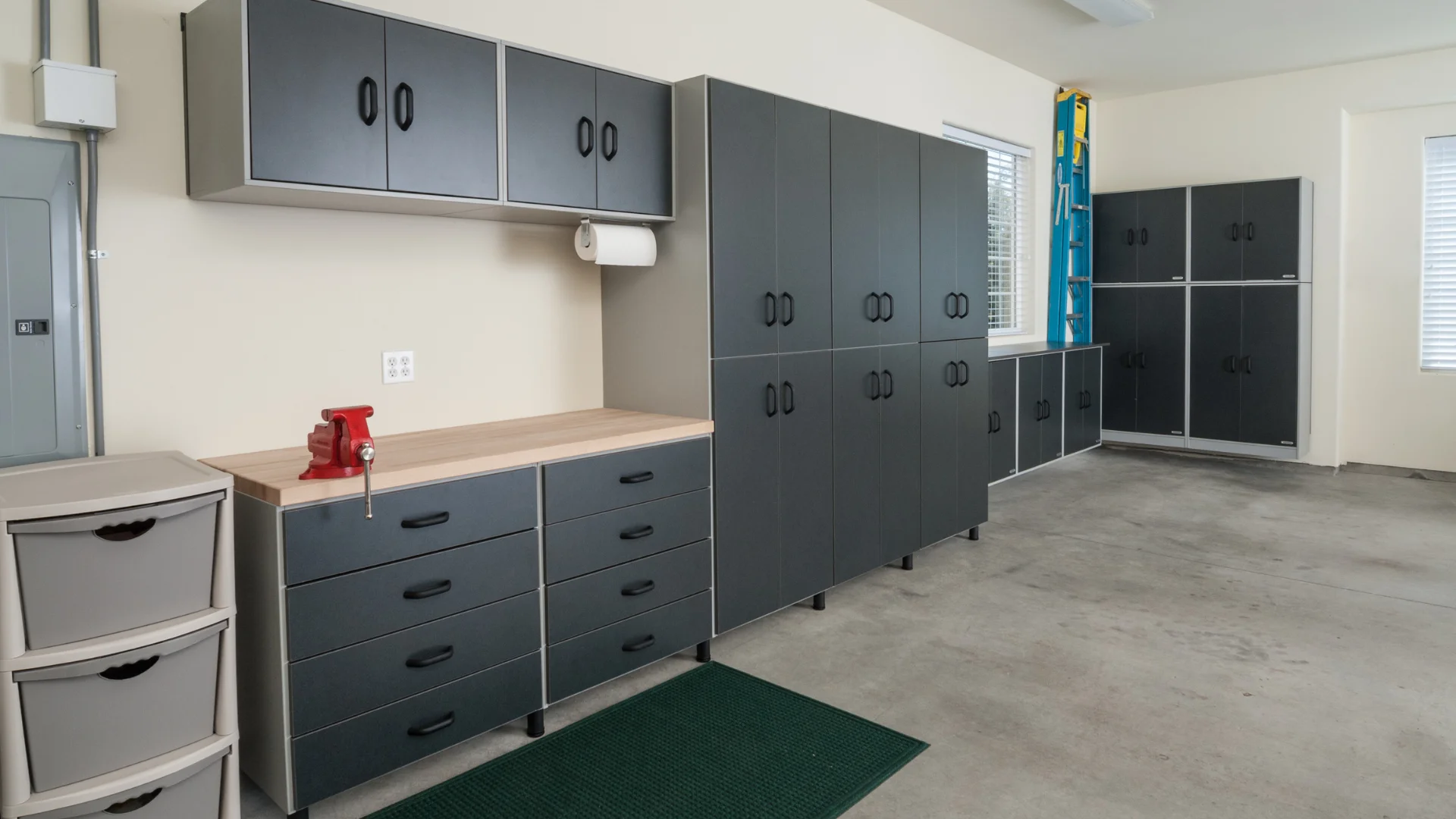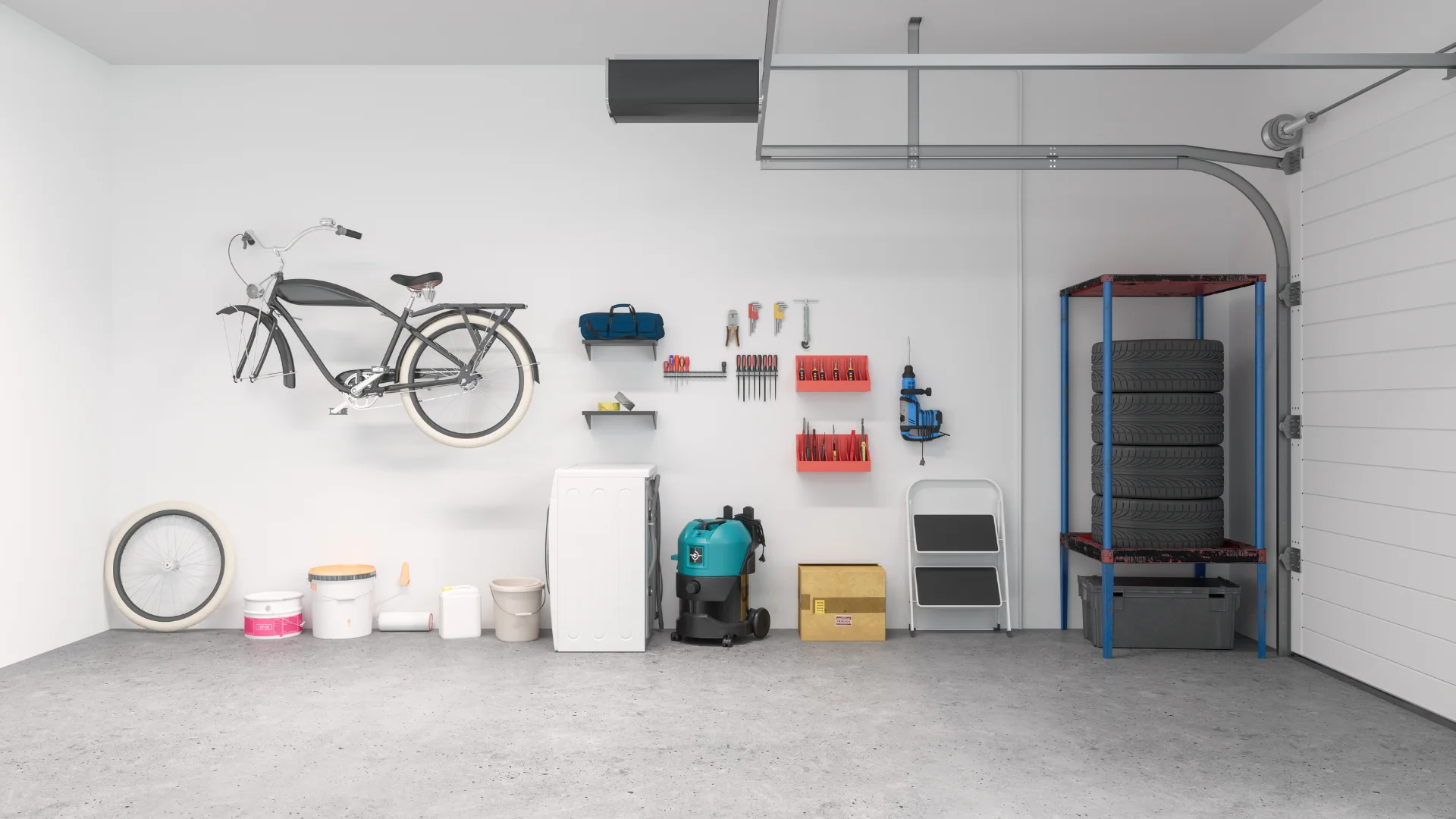Garage DIY and custom home improvement projects are a great way to maximize your home’s utility, add value, and personalize your space. This guide covers everything you need to know, including who can undertake these projects, how to get started, average costs, top projects, tools, and safety tips.
Who Can Do Garage DIY Projects?
Garage DIY projects are accessible to a wide range of skill levels, from beginners to experienced DIY enthusiasts. Basic projects like organizing and painting can be done by almost anyone, while more complex tasks such as building custom storage or installing new flooring might require some experience with tools and materials. The key is to start with projects that match your skill level and gradually take on more challenging tasks as you gain confidence and experience.
Getting Started with Garage DIY Projects
Planning and Preparation
- Assess Your Needs: Determine what you want to achieve with your garage project. Are you looking to create more storage, build a workshop, or simply clean and organize the space?
- Set a Budget: Establish a budget for your project. Consider the cost of materials, tools, and any professional help you might need.
- Create a Plan: Draw up a plan for your project. This can include measurements, materials list, and step-by-step instructions.
- Gather Materials and Tools: Make sure you have all the necessary materials and tools before you start. This includes basic tools like a drill, saw, and level, as well as specific materials for your project.
Average Cost of Garage Projects
The cost of garage projects can vary widely depending on the complexity and scope of the work. Here are some average costs for common garage projects:
- Basic Organization and Cleaning: $100 – $300
- Painting and Finishing: $200 – $500
- Installing Storage Solutions: $500 – $2,000
- Flooring Installation: $1,000 – $3,000
- Building a Workshop: $1,500 – $5,000
Best Garage DIY Projects
High-End Projects
- Custom Cabinets and Storage
- Benefits: Custom cabinets and storage solutions can transform your garage into a highly functional space. These projects can be tailored to your specific needs, whether you need space for tools, sports equipment, or gardening supplies.
- Cost: $1,000 – $5,000
- Garage Loft or Mezzanine
- Benefits: Adding a loft or mezzanine can significantly increase your storage space. This is ideal for garages with high ceilings.
- Cost: $2,000 – $6,000
Budget-Friendly Projects
- Wall-Mounted Shelving
- Benefits: Shelving is an inexpensive way to organize your garage and keep items off the floor.
- Cost: $100 – $500
- Pegboard Tool Organizer
- Benefits: Pegboards are a cost-effective solution for organizing tools and keeping them easily accessible.
- Cost: $50 – $200
Unique and Creative Projects
- Fold-Down Workbench
- Benefits: A fold-down workbench saves space and provides a functional work area when needed.
- Cost: $100 – $300
- Bike Storage Racks
- Benefits: Custom bike racks can keep your bicycles organized and free up floor space.
- Cost: $50 – $150
Cheapest Garage DIY Projects
- DIY Overhead Storage
- Benefits: Utilizing the ceiling for storage is a great way to maximize space. This can be done with inexpensive materials like wood or metal racks.
- Cost: $50 – $200
- Recycling Station
- Benefits: Create a dedicated space for recycling bins. This is a simple project that helps keep the garage organized.
- Cost: $20 – $50
Easiest Garage DIY Projects
- Painting the Garage Floor
- Benefits: Painting the floor can improve the look of your garage and make it easier to clean.
- Cost: $50 – $200
- Installing Hooks and Hangers
- Benefits: Hooks and hangers are easy to install and can be used to organize tools, bikes, and other items.
- Cost: $10 – $50
Usual Tools and Materials
Essential Tools
- Drill and Drill Bits
- Purpose: For making holes and driving screws.
- Cost: $50 – $200
- Circular Saw or Jigsaw
- Purpose: For cutting wood and other materials.
- Cost: $50 – $150
- Screwdrivers and Wrenches
- Purpose: For assembling and disassembling components.
- Cost: $20 – $50
- Tape Measure
- Purpose: For accurate measurements.
- Cost: $10 – $20
- Level
- Purpose: To ensure everything is straight and level.
- Cost: $10 – $30
Materials
- Wood and Plywood
- Purpose: For building shelves, workbenches, and cabinets.
- Cost: $20 – $50 per sheet
- Metal Racks and Brackets
- Purpose: For heavy-duty storage solutions.
- Cost: $10 – $50
- Paint and Sealant
- Purpose: For finishing surfaces and protecting against moisture.
- Cost: $20 – $50 per gallon
- Fasteners (screws, nails, bolts)
- Purpose: For assembling various components.
- Cost: $5 – $20 per box
Safety Considerations
Personal Protective Equipment (PPE)
- Safety Glasses
- Purpose: To protect eyes from dust and debris.
- Cost: $10 – $20
- Gloves
- Purpose: To protect hands from cuts and splinters.
- Cost: $10 – $20
- Dust Mask or Respirator
- Purpose: To prevent inhalation of dust and fumes.
- Cost: $10 – $30
- Ear Protection
- Purpose: To protect hearing when using loud tools.
- Cost: $10 – $30
General Safety Tips
- Keep Work Area Clean
- A tidy workspace helps prevent accidents. Keep tools and materials organized and clean up spills immediately.
- Use Tools Properly
- Always read and follow the manufacturer’s instructions for tools and equipment. Use the right tool for the job to avoid injuries.
- Work in a Well-Ventilated Area
- Ensure proper ventilation when working with paints, solvents, and other chemicals to avoid inhaling harmful fumes.
- Lift Safely
- Use proper lifting techniques to avoid back injuries. Lift with your legs, not your back, and get help with heavy or awkward items.
Conclusion
Garage DIY and custom home improvement projects offer numerous benefits, from increasing storage and functionality to enhancing the overall value of your home. By carefully planning your projects, budgeting appropriately, and following safety guidelines, you can successfully transform your garage into a highly functional and organized space. Whether you’re a beginner or an experienced DIYer, there’s a project for every skill level and budget.







